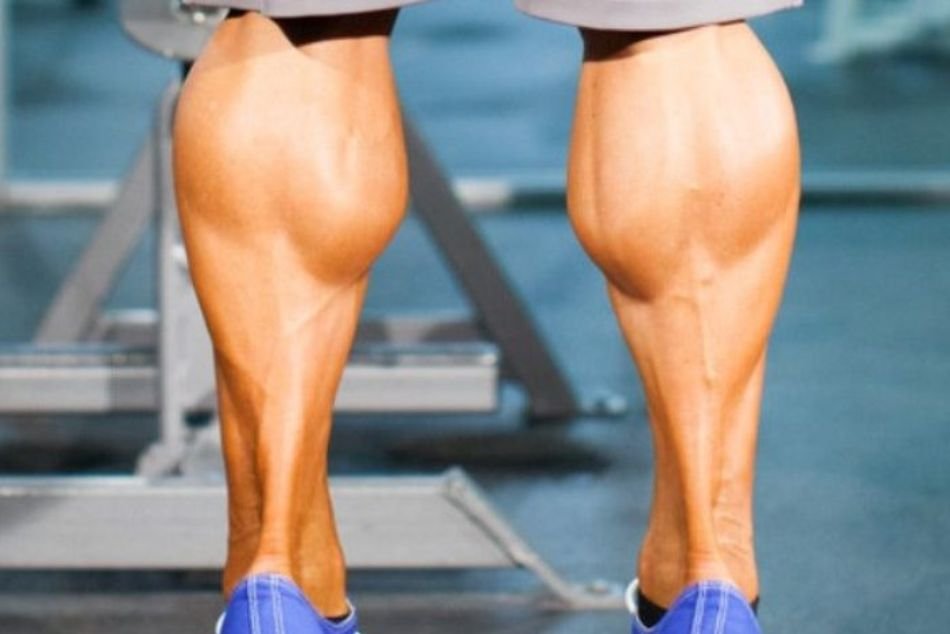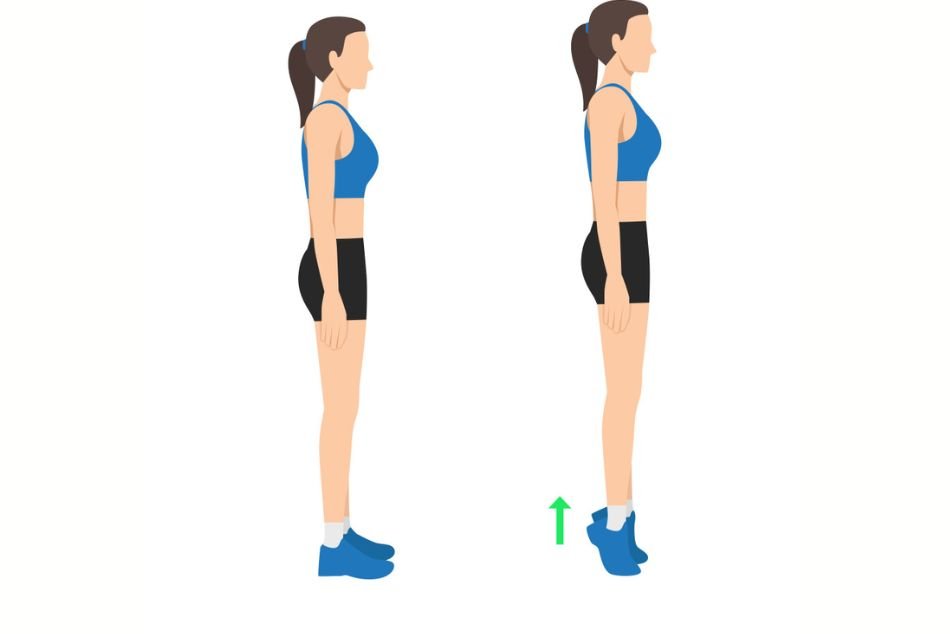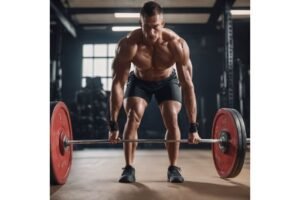Know How to Get Bigger Calves Without Weights Doing Body Weight Calf Exercises
Many people focus on lower body exercises for balance and stability in daily activities, but calves are often overlooked in favor of hamstrings, quadriceps, and glutes. If you’re wondering how to get bigger calves without weights, this article will show you simple exercises you can do at home or in the gym.
In bodybuilding, no muscle should be ignored, and calves are no exception. Despite being one of the most challenging muscles to grow, they can still be developed with the right training.
While most people think that building bigger calves requires heavy weights, you can actually see great results when you do bodyweight exercises. This guide will walk you through effective techniques to grow your calves without any equipment, focusing on consistency and proper form.

Here’s How to Get Bigger Calves Without Weights
Here are 7 effective calf exercises you can do at home without equipment. Start slow and gradually increase repetitions if you’re new to working this muscle group. You can either add these exercises to your current routine or create a calf-focused circuit using your favorites!
Here below are the 7 best calf exercises that you can do with or without using weights.
Standing Calf Raises

It’s a classic calf exercise that you can do in the gym, office, home, or wherever you want. You start by simply standing with the feet hip-width apart and slowly rising onto your toes while squeezing calf muscles and making sure your body is in a straight position. Similarly, you lower back onto your heels to the floor in a slow & controlled motion. And, repeat this until you complete the set.
Single Leg Calf Raises
Similar to standing calf raises, here you perform an exercise with a single leg. Here, you start by standing with your feet hip-width apart and using a wall or chair to keep balance. But here, you lift one of your feet slightly off the ground. Then, raise the heel of your standing leg by squeezing your calf while engaging your core muscles. Hold for a second at the top, keep good posture, and then lower your heel in a controlled manner. And repeat till the given set is not completed.

Lastly, you repeat the same with another leg, which means once you complete the repletion on both legs, it’ll be counted as the completion of one set.
Jump Squat

Jump squats work your lower body and core. Here, you start with your feet hip-width apart and squat with a straight back and knees behind your toes. Jump up, swinging your arms overhead, then land softly and repeat.
Raised Heel Squat

Start by standing with your feet wide and your toes slightly pointed out. Keep your back straight, engage your core and glutes, and lower into a squat. Push through your toes to lift your heels as you stand up. Slowly lower your heels back to the floor and repeat.
Outward Calf Raises

It’s similar to standing calf raises but slightly different. It’s another calf workout that you can do at home. To do it, you simply point your toes slightly outward. Further, you simply follow all the steps you do for standing calf raises. Nonetheless, be sure you keep your knees straight and soft until you complete the movement to prevent any injury or pain.
Inward Calf Raises

Opposite of Outward Calf Raises, here you stand, pointing your toes slightly inward. Further, do the exact steps that you do at the time of standing calf raises while making sure your knees are straight and soft till you complete the exercise movement.
Seated Calf Raise

This is another classic calf exercise you can do anywhere, even in your office. All you need to do is sit on a chair with your feet flat on the floor. Then, lift your heels as high as possible, rising onto your toes and slowly lowering them back down. Repeat 10 – 20 times.
Benefits of Building Calves Without Weights
1. Accessibility and Convenience
- No equipment required
- Perform exercises at home, work, or while traveling
2. Strength and Endurance Development
- Utilizes body weight for muscle-building
- Enhances muscle control and overall strength
3. Enhanced Performance for Athletes
- Ideal for athletes, dancers, and runners
- Builds powerful calf muscles critical for performance
4. Improved Balance and Stability
- Engages core and lower body muscles
- It helps in achieving better balance and stability
Key Tips for Getting Bigger Calves Without Weights
1. Increase Volume and Frequency
Since the calves are accustomed to daily use through walking and standing, they tend to have high endurance. Therefore, to see muscle growth, it’s important to train them frequently and with high volume. Including calf exercises into your routine 3-4 times per week and performing multiple sets of each exercise will help stimulate growth.
2. Use Time Under Tension
When performing exercises like calf raises, focus on the speed and control of each rep. By slowing down the lowering (eccentric) phase of the movement, you place more time under tension on the muscle, which is key for muscle growth. A controlled 2-3 second descent during calf raises can make a significant difference.
3. Stretch and Strengthen
Calf muscles tend to get tight, which can limit growth and range of motion. Hence, it’s best to include regular stretching into your routine to improve flexibility and muscle length.
Stretching the calves after your workout or during rest days will ensure you maintain proper muscle health and mobility.
4. Progressive Overload
Even without weights, it’s essential to challenge your calves to promote growth progressively. It can be done by increasing the reps, sets, or difficulty of the exercises. For example, start with double-leg calf raises and progress to single-leg calf raises. You can also perform calf raises on an elevated surface to increase the range of motion.
Anatomy of Calf
Equally, it’s important to understand the anatomy of the calves. The calf muscles consist of two primary muscles:
1. Gastrocnemius
It’s the larger, visible part of the calf muscle that gives the calves their prominent shape. It has two heads and plays a major role in movements like running, jumping, and walking on your toes.

2. Soleus
Located underneath the gastrocnemius muscle, the soleus is a deeper muscle responsible for endurance activities, such as walking or standing for long periods. It works primarily when your knees are bent.
To effectively target and grow your calves without weights, you need exercises that work both the gastrocnemius and the soleus muscles. By challenging these muscles from different angles and using the right techniques, you can see noticeable improvements in calf size and definition over time.
Wrapping Up
Building bigger calves doesn’t require heavy weights or fancy gym equipment. With dedication and consistency, you can achieve significant calf growth by incorporating bodyweight exercises such as calf raises. The key to success lies in proper technique, progressive overload, and regular training. Remember, the calves are a resilient muscle group, so you must challenge them frequently to see results.
Embrace the process, stay patient, and apply the exercises discussed here to your training routine, and you’ll soon see the results of your hard work. Whether you’re training at home, in the park, or while traveling, now you know exactly how to get bigger calves without weights.





